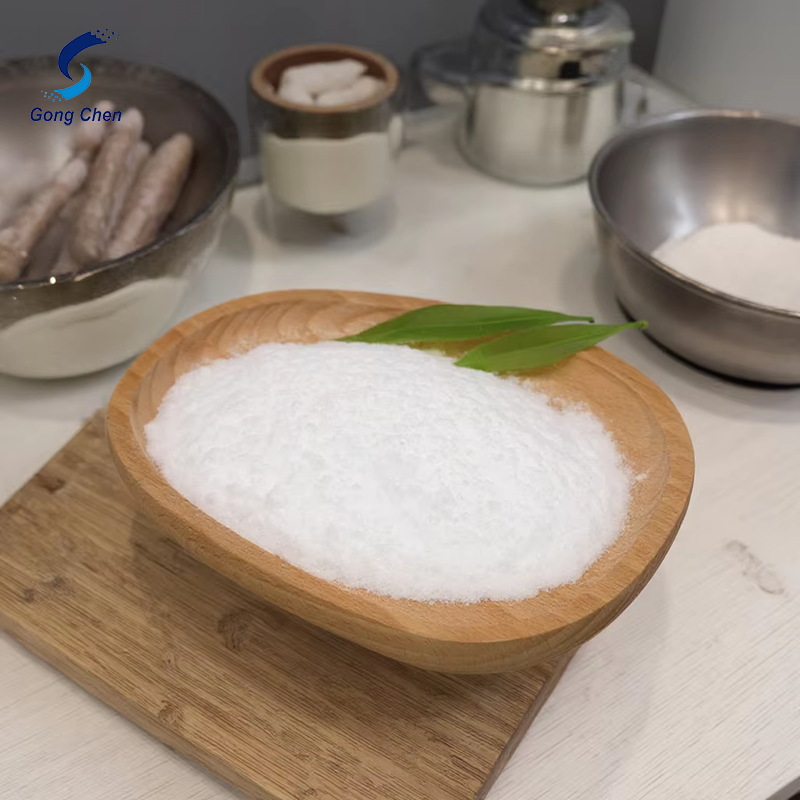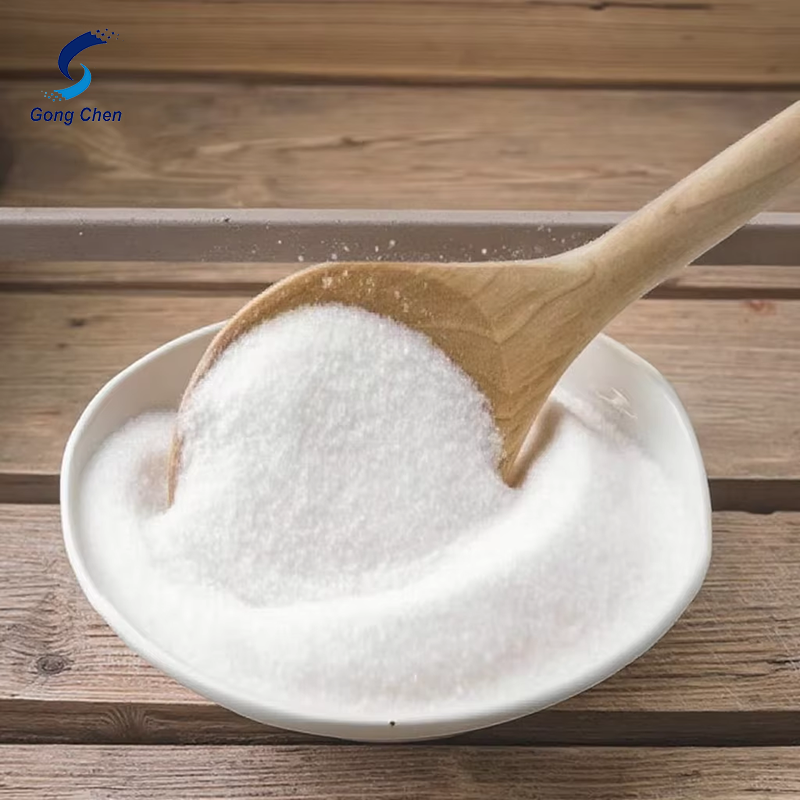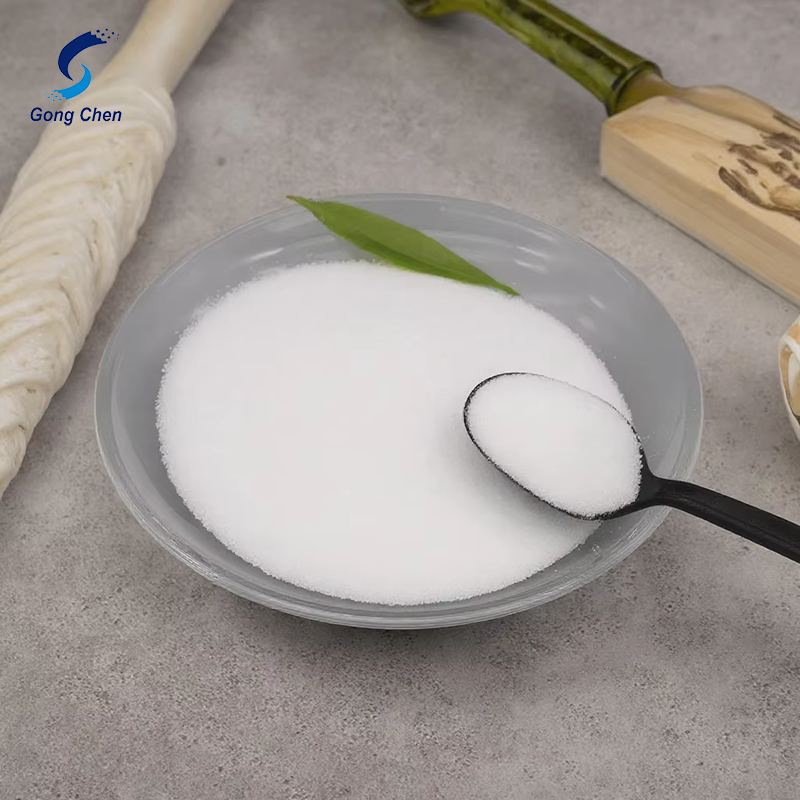Sugar reduction: sweet war, where is the food and beverage road?
-
Last Update: 2021-02-02
-
Source: Internet
-
Author: User
Search more information of high quality chemicals, good prices and reliable suppliers, visit
www.echemi.com
editor press:How food and beverage manufacturers can find a sugar-reducing gold ratio that can both adapt to the sugar-reducing trend and give their products a flavor and taste comparable to those of sugary foods.The World Health Organization recommends that an adult consume no more than
25g
of added sugar per day, but sugar-rich food and beverages are cheap, delicious and uquitous, and most people consume too much added sugar every day. There is ample evidence that eating too many calories from added sugar is thought to be associated with metabolic disease and can lead to cardiovascular disease and diabetes.the global sugar reduction trend, from the organization of appeals, government-oriented, developed into practical action. Global implementation of the "sugar tax" countries and regions in the past two years gradually increased, the United Kingdom, Ireland and other countries have already been a step ahead, some cities in the United States also joined in. In order to take the lead in the trend of sugar reduction, major food manufacturers have taken a series of measures, including taking the initiative to reduce sugar in their formulations, replacing sugar with synthetic sweeteners (Abbas sweet, glycosin, ansai honey) or natural sweeteners (Rohan fructose glycosides, stevia glycosides, etc.).how food and beverage makers can find a sugar-reducing gold ratio that can both adapt to the sugar-reducing trend and give their products a flavor and taste comparable to sugary foods, this
C
report may give you something to gain.Ten
years ago, an endocrinologist in California posted a nearly
90
-minute video on
YouTube
that changed the way millions of people think about sugar.
Robert Lustig
in the video sugar: Bitter Truth, cites a series of arguments that excessive sugar intake can lead to chronic metabolic diseases.added sugar not only makes food too high in calories, but also harmful to health. This view is controversial, but the circumstantial evidence is solid. Studies have shown that the development of metabolic syndrome is associated with the intake of added sugars, which can lead to cardiovascular disease
type 2 diabetes.01regulatory actions are driving the sugar reduction trend public health groups have driven action and pushed laws and regulations to limit the development of high-sugar foods. Sugary soda has become the first product to be targeted, with
14 countries
taxing sugary drinks., only a handful of counties and cities in the U.S. tax sugary drinks. But for the first time, a new national food labeling bill explicitly requires food companies to label packaged foods and beverages with sugar content. Almost all foods on supermarket shelves now contain added sugars, a common practice that will be strictly regulated in the future.U.S. consumers will soon see changes in the ingredients on food and beverage labels. The reason is that food companies in order to label good-looking, in addition to reducing the content of added sugar, but also gradually abandon the use of those not trusted by consumers synthetic sweeteners, to use label-friendly natural sweeteners as a new treasure. Unlike regular sugars, syrups, and aspartas, many food labels in the future will feature new low-calorie functional sugars such as stevia, erythyl glycol, and
allulose
.The
new U.S. food labeling rules, which will come into effect on January ,
202
0
, will require labels to indicate the amount of added sugar and show the daily percentage of added sugar in each serving. In fact, many drinks have been replaced with new labels in advance as required by the new regulations. The new rules also require food specifications to be
"
reflect the actual amount of food people eat through the day.
”A bottle of coca
20
ounces
(
about
591
ml
)
contains
65
grams of added sugar, exceeding the recommended daily intake for adult men.figures on some of the food and beverage labels that have been changed are staggering, such as
20
ounces (about
591 mL
) of bottled Coca-Cola containing
65 G
added sugar, is the
FDA
daily added sugar limit intake of
130%
, people from the label can know not to drink two bottles, only a little more than one bottle.02choice of sweeteners the type of food and beverage and consumer preferences determine the best sweetness solution path. Under new U.S. labeling rules, so-called healthy foods can no longer hide added sugar in concentrated sugar cane juice, various syrups and concentrated white grape juice because they must be marked for consumers to see. Nate Yates
head of sugar reduction international operations at
, a food ingredients manufacturer, is convinced that labels affect consumer behavior because fewer consumers ignore labels each year. Survey data show that the proportion of U.S. consumers who pay attention to labels and influence shopping decisions is as high as
80 percent
and continues to grow. industry experts told
C-EN
that most food producers believe the new labelling rules will not cause panic among businesses, but support the sugar reduction effort, with some brands responding to consumer demand for sugar reduction for years. On the other hand,
FDA
first proposed new labeling regulations in 2014
and only officially began in
, 2020, enough time for companies to develop new formulations to avoid being labeled high in sugar. According to market research, the most common formula for reducing sugar is to replace some sugars with zero-calorie or low-calorie sweeteners. But food industry trends are already phasing out this simple alternative, as many consumers are shunning synthetic sweeteners and artificial flavors, preferring to choose natural ingredients. The difficulty of exploring new formulations opens up vast competition for raw material companies, with food ingredients companies such as
Cargill
,
Ingridion
, and
Tate and Lyle
all introducing new sugar reduction options to meet consumers' expectations of taste, appearance, taste and price. Their expertise has created new categories of healthy food and there is now a wide range of needs. Amaris will launch a new zero-calorie sweetener for food and beverages. " is not just in a specific product line, food companies will make adjustments to most of their brands. How much sugar needs to be reduced depends on their target customers, and I think even in foods with high sugar content itself, attention must be paid to reducing some percentages of sugar content. "
Yates
said. are often working with their raw material suppliers to develop strategies and test new formulations. Such collaboration is multiplied as calls for sugar reduction expand from drinks to categories such as baked goods, dairy products and even confectionery. Businesses are aggressively exploring and are believed to be the norm with low-sugar products. " bigger problem is the demonization of sugar, and it's going to last, and I don't think it's going to go away. Tom Vierhile,
vice president of north
strategy at
research firm Innova Market Insights
said. this
June
,
Innova
at the American Food Technology Association
's
conference,
8%
of new food and beverage products in the U.S. claim to have reduced sugar and use it as a selling point, up
55 percent from
FDA
announced in
201
4 that it was changing
. 23% of all new products that claim not to add sugar, low sugar or sugar
fall
the soft drink category. Similar data are available in exercise nutrition, which explains how ketogenic and other trends in high-protein, low-carbon water diets are helping to meet consumer demand for sugar-reducing or sugar-free options. Vierhile
that actual sugar-reducing products should be more than that, and that the sugar-containing tips on the labels don't cover every case of sugar reduction.
"
you'll see that some companies in some cases reduce the sugar content of their products in disguise, but they don't label them as low-sugar, sugar-free. This will be even more so when the new labeling law is implemented.
” Food companies don't always want their new recipes to get attention. First, they may adjust their plans over time and don't know how much sugar they can lose.
consumers in the U.S. don't like artificial sweeteners, at least in the short term, according to
Innova
Consumer Survey data. these concerns may be why brands are reluctant to discuss their plans publicly. Kraft Heinz, Espresso international and Nestle have refused to talk to
C
about their work on sugar reduction among hundreds of food brands. Yates
the urgent need for sugar reduction will make zero-card or low-card sweeteners, including synthetic sweeteners, popular. , for example, sucrose is the preferred cheap option for sweetening many products, which are
600
sugar. Foods that are too low in price cannot use high-priced natural sweeteners such as stevia and will continue to rely on synthetic sweeteners. is a common choice for low-calorie drinks and low-calorie yogurts, aspartas sweets and anthai honey combinations. In the UK, they have teamed up to help soda makers reduce sugar content in their drinks, just as they can avoid the UK's sugar tax. However, experts have told
that because
many consumers think aspartas is unsafe, most brands want to avoid using it in new products. 03 The growth of the natural product market thanks to innovations in plant breeding, enzyme technology and bioengineering, stevia and its sweet glycosides are likely to enter the mass beverage market in the coming years. Currently, stevia's sweeteners consist mainly of rebodyside
A
(
Reb A
), the highest content of sweetener molecules in stevia leaves. However
Reb A
bitter, it is difficult to mask the taste of its licorice, limiting the widespread use of this natural sweetener. now, stevia specialist companies
PureCircle
and
SweeGen
say they will soon be able to mass produce the rare sugar
Reb M
glycoside, which tastes closer to sugar.
PureCircle
years to grow stevia to produce more
Reb M
. Last year, the company said its patented varieties,
Starleaf, had
"large-scale
"
.
PureCircle
is also looking at how to convert
Reb A
into
Reb M
, in anticipation of rapid
. The company explains that the process is similar to an enzymatic cascading reaction, in which a portion of
Reb A
is converted into other stevia glycosides. Irian's main stevia supplier,
SweeGen
also said it could produce
Reb M
and any stevia glycosides needed using its exclusive enzyme method. The company obtained the enzyme strain and related process
a Boston-based
company, Conagen, in the united States. both stevia companies are actively expanding production capacity. with new investment from Sumitomo Chemica ,
SweeGen
said it would expand its European production capacity to produce
3,000
tons of stevia sweeteners a year. Meanwhile,
PureCircle
said
within
three years
This article is an English version of an article which is originally in the Chinese language on echemi.com and is provided for information purposes only.
This website makes no representation or warranty of any kind, either expressed or implied, as to the accuracy, completeness ownership or reliability of
the article or any translations thereof. If you have any concerns or complaints relating to the article, please send an email, providing a detailed
description of the concern or complaint, to
service@echemi.com. A staff member will contact you within 5 working days. Once verified, infringing content
will be removed immediately.







